The CCAT Grade 1 Test 2025
Updated November 6, 2024
Standardized tests are quite common in schools throughout the world, with some children taking a test more than once a year. While some tests identify areas students need to work on, others can have a more significant impact.
Many tests are used to determine whether a student is suitable for a particular school or program. Therefore, it is important that students understand the type of test they are sitting and how best to do well.
What Is the Grade 1 CCAT?
The Canadian Cognitive Abilities Test (CCAT) is a reasoning assessment that can determine whether a student is eligible for gifted and talented programs.
The test is standardized, group-administered and given in Canada to students in grades kindergarten to 12.
The CCAT exam can be long, and the three batteries are often given in separate testing sessions.
Each battery runs between 30 and 45 minutes. In total, the CCAT consists of between 118 and 176 questions, depending on which level is being taken.
The test aims at determining a child’s aptitude for learning but is not used to test what a child has learned in school.
The test can identify and consider:
- At-risk and gifted students
- Areas where students may be underperforming
- Strengths to build success
- Grouping students based on their scholastic aptitude
- Work on emphases in instruction
The test looks at three areas of ability:
- Verbal – Sentence completion, verbal analogies and verbal classification
- Quantitative – Number series, number puzzles and number analogies
- Non-Verbal – Figure classification, figure analysis and figure analogies
The test is like the CogAT test (Cognitive Abilities Test) that is given to students in the US.
Like the CAAT, the CogAT test is also divided into three batteries: verbal, nonverbal and quantitative. Each of these batteries has three sub-tests.
The CogAT verbal battery contains audio instruction and images to make it easier for young children.
Practice CCAT Grade 1 Test with Test Prep Online
What Does the Grade 1 CCAT Contain?
The CCAT consists of three batteries and subtests:
CCAT Grade 1 Verbal
The verbal section looks at a student's understanding of the relationship between words and how language is structured.
Students are assessed on their ability to use language for verbal reasoning and oral vocabulary through three types of questions:
CCAT Grade 1 Picture Analogies
Students are given a pair of pictures that hold a relationship. Students are then given another pair with one picture missing.
Students need to understand the relationship between the first pair to figure out what the missing image is.
Below are a set of pictures that have a relationship. There is a third picture and the image next to it is blank. Please select the image that best describes the relationship.
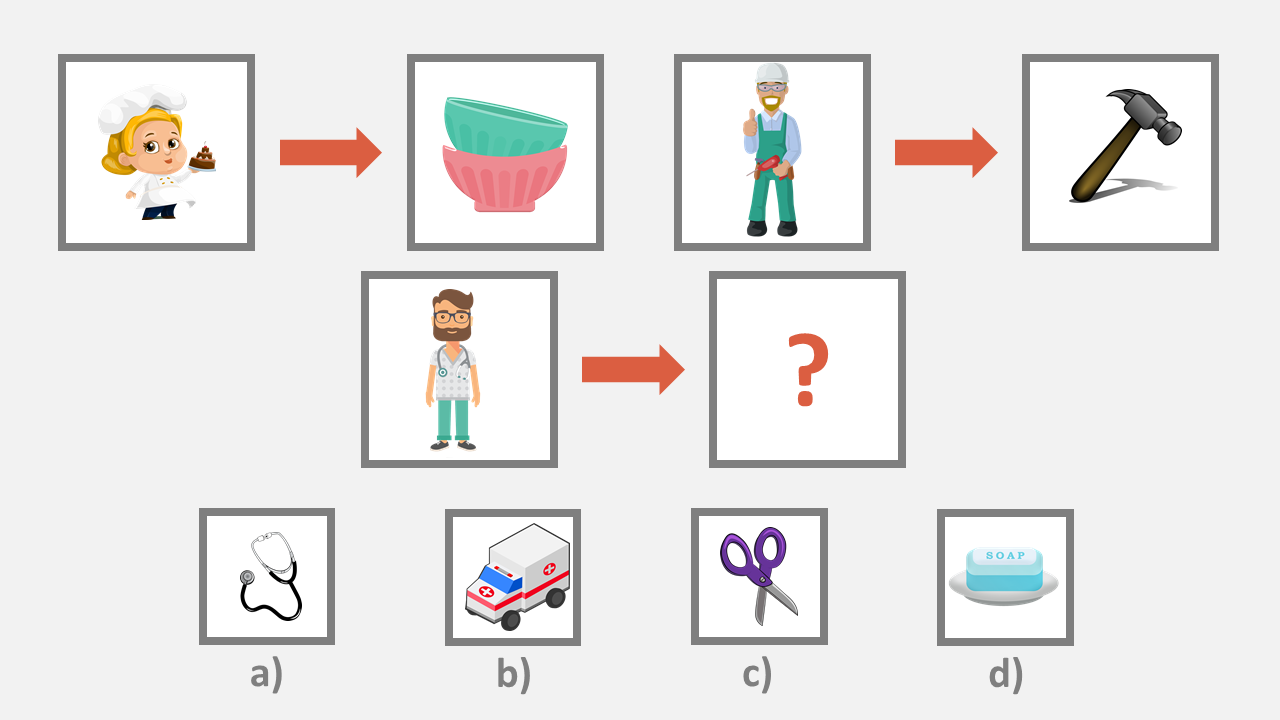
Two sets of relationships are depicted in the images below. Please choose the correct image to complete the third set.
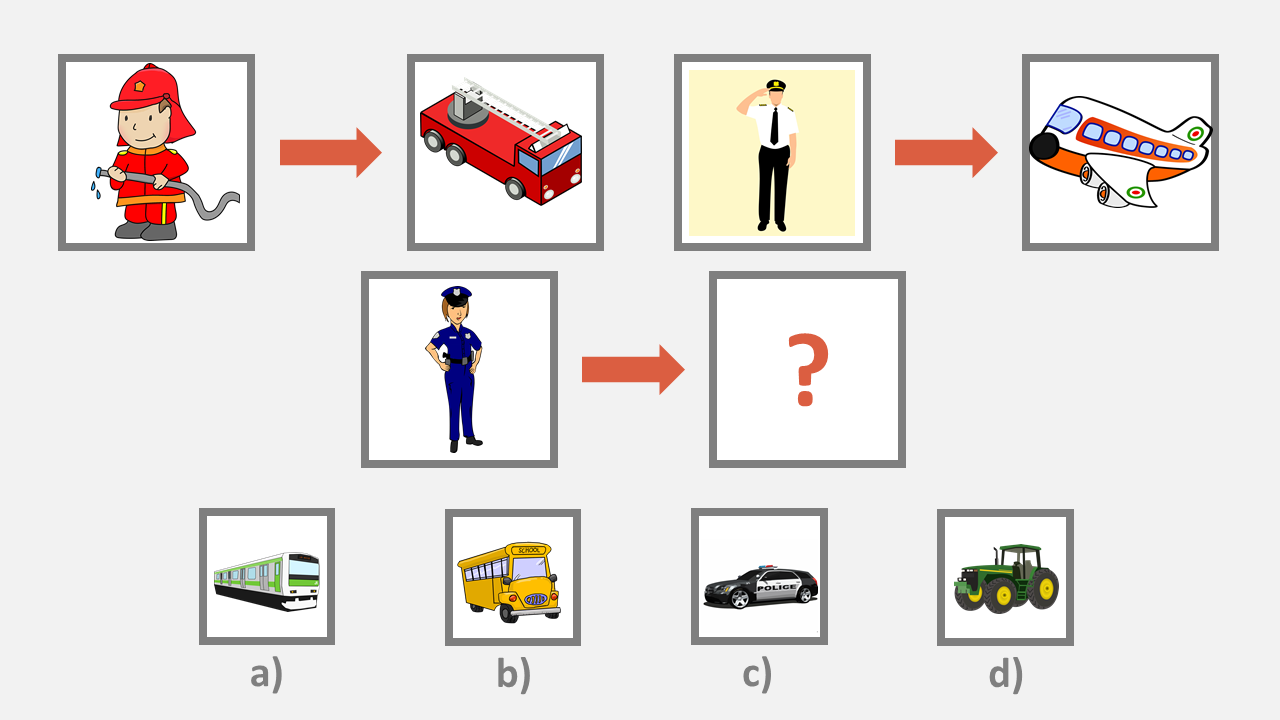
CCAT Grade 1 Sentence Completion
Students need to listen and follow instructions to choose the correct photo out of a set of three.
Point to the bird in the nest.
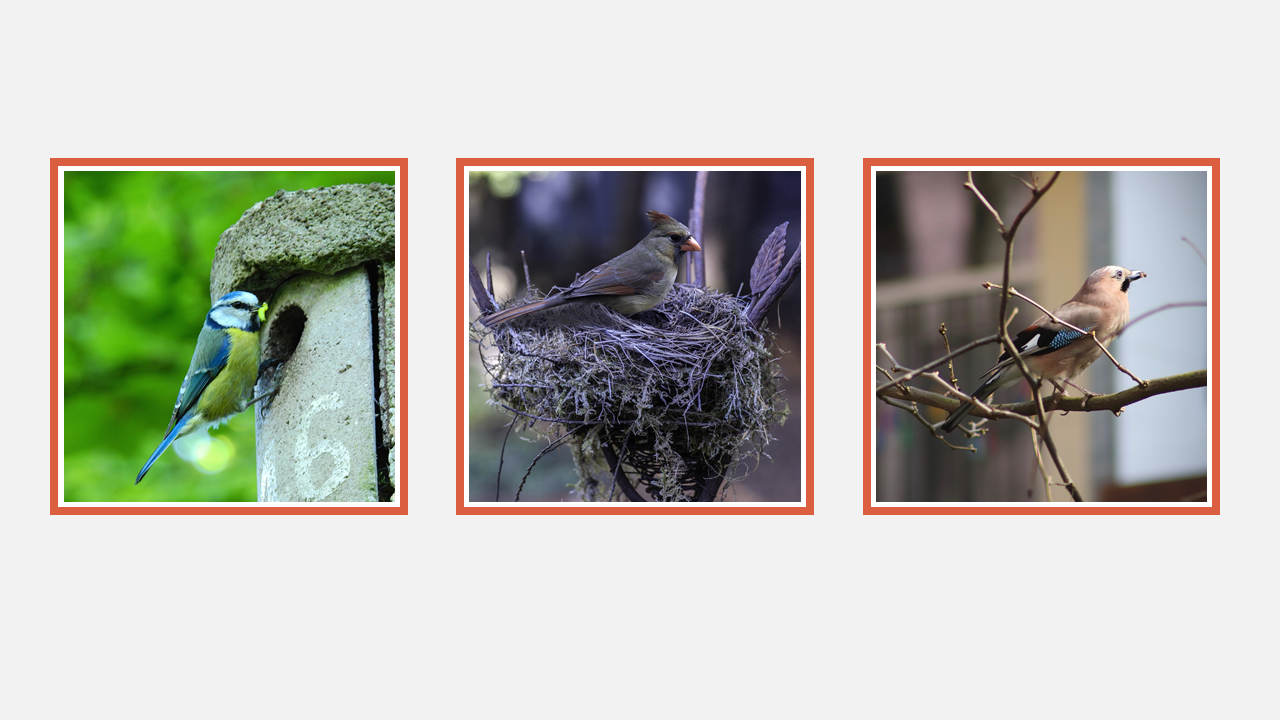
Look for the boy kicking the ball.
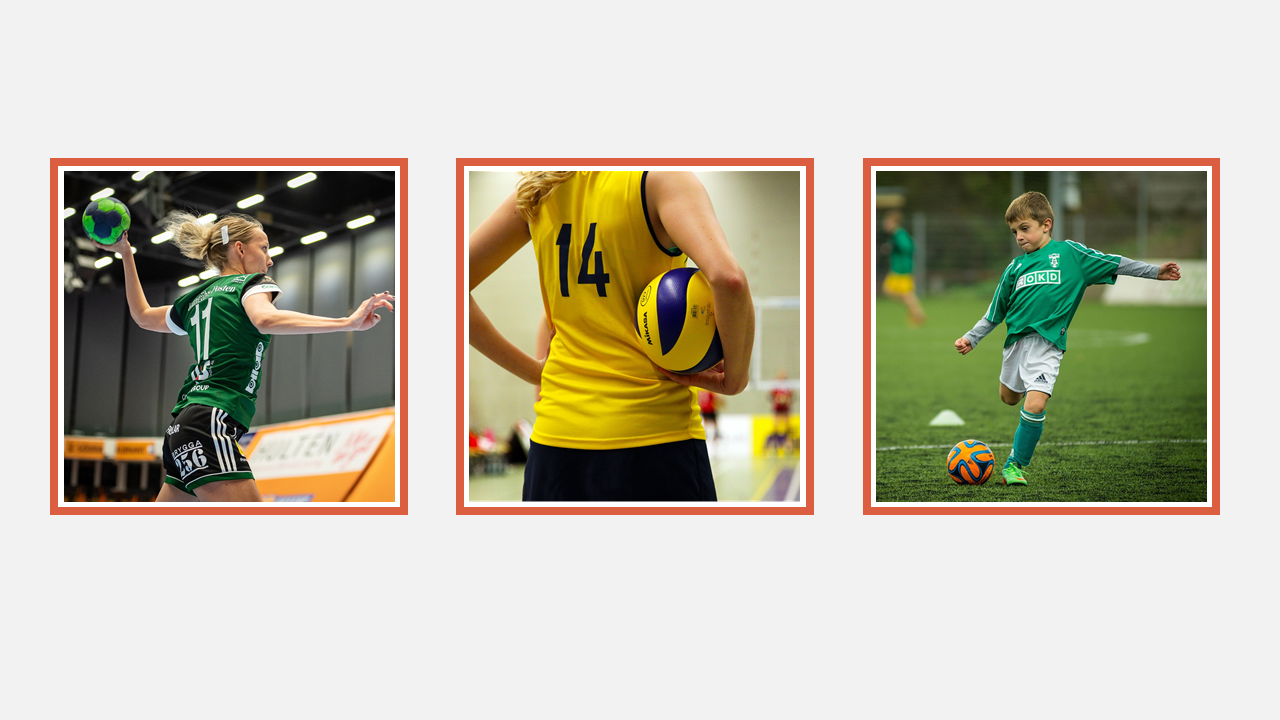
CCAT Grade 1 Picture Classification
Students are given three pictures that belong to the same group. Students then need to choose another image that will fit into the group.
The importance is understanding which group the images belong to and correctly adding the third image.
If you want 12-month access to all the practice resources for this test, our partner TestPrep-Online.com offers a Family Membership.
Family Membership gives you access to all the TestPrep-Online resources for the next 12 months. You will also get two separate accounts, which can be very helpful if you have two children preparing for their tests.
Get a Family Membership with 12-month access
Below are three images that belong together for a reason. There are three answer options and only one fits into the group. Please choose the best fit.
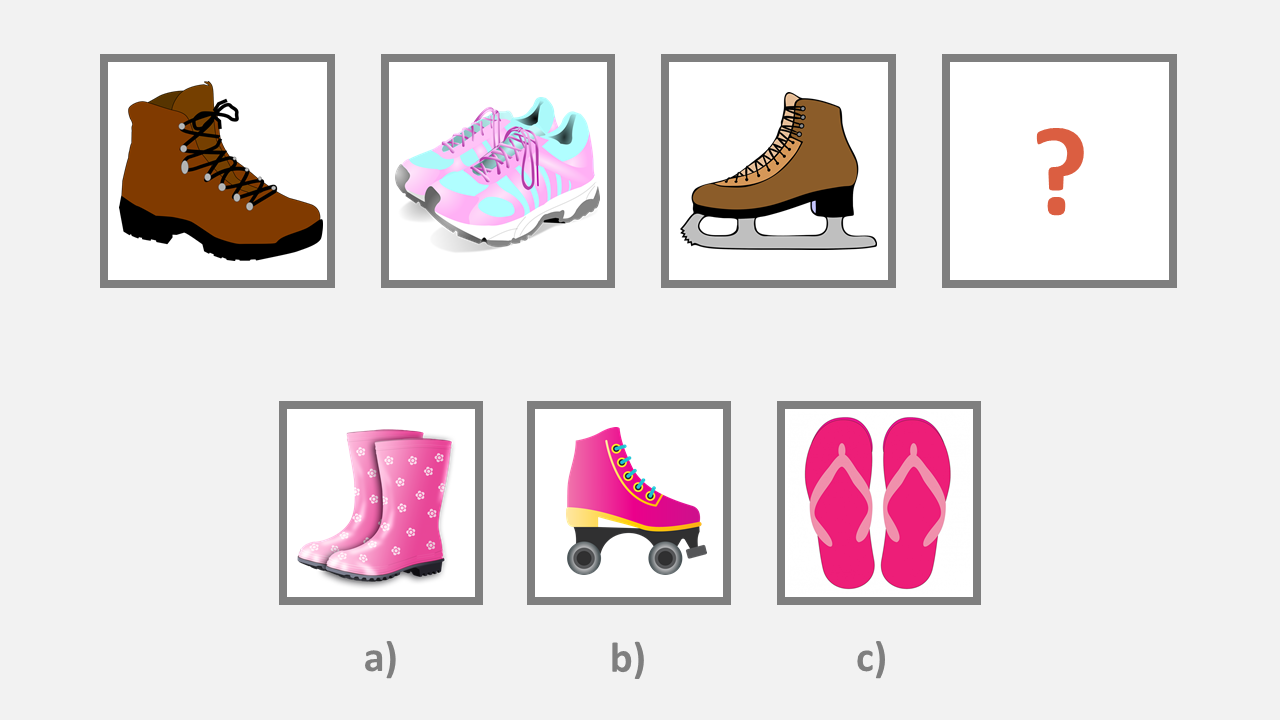
There are three images that belong to the same group. There are three more choices and only one belongs. Please choose the best fit.
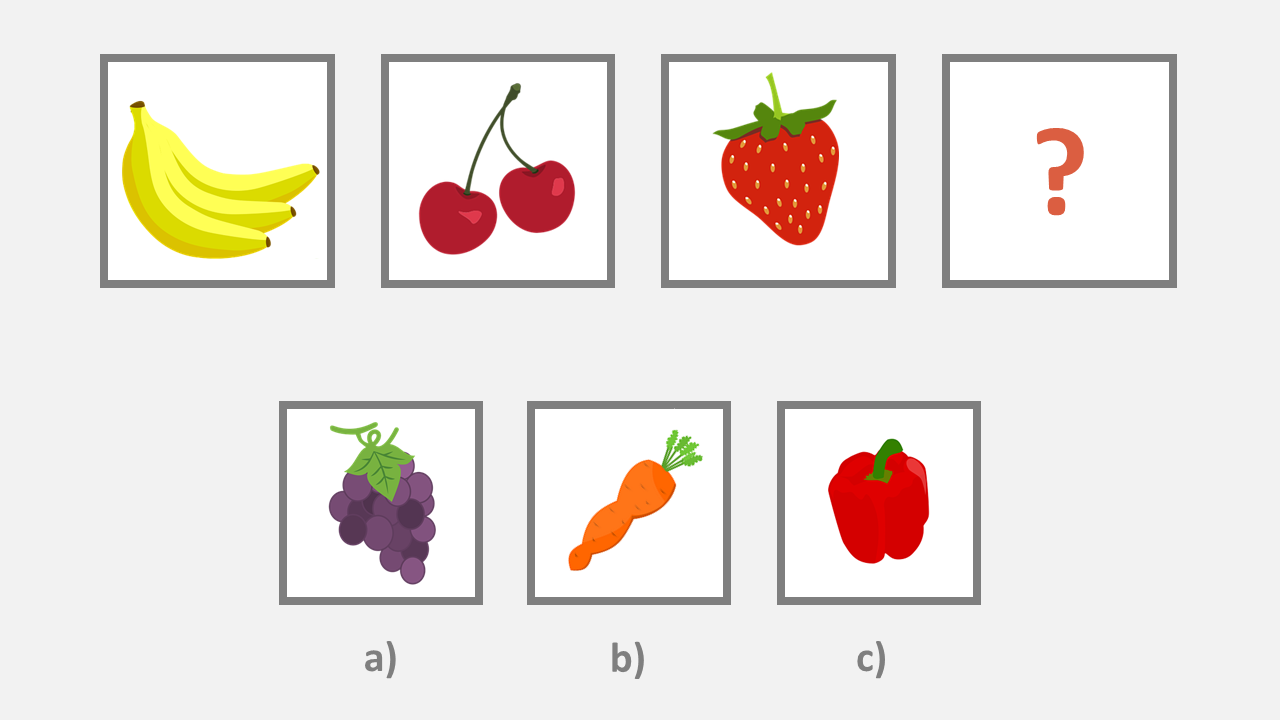
CCAT Grade 1 Quantitative
This section measures a student’s ability to both reason and problem solve using numbers and mathematical concepts.
It assesses relational concepts and quantitative concepts with four types of questions.
CCAT Grade 1 Number Analogies
Students are given a pair of pictures that have a relationship. They are then given another pair with one of the images missing.
Like in the Verbal Battery section, students need to understand the relationship between the images to choose the missing image.
The relationship is a calculation, such as the first image may have two pieces of fruit and the second three pieces, therefore the relationship is +1.
Below is a set of images that show a numerical relationship. In the second set of images, one is missing. Please choose the image that best completes the relationship.
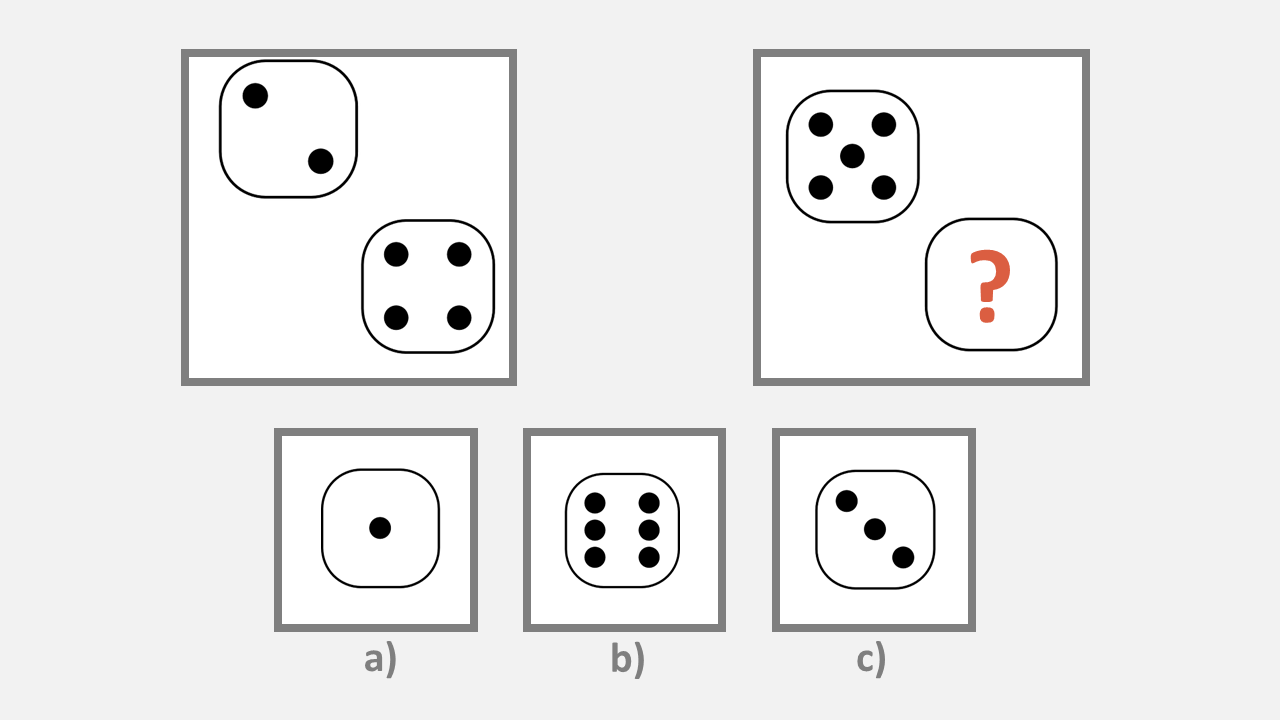
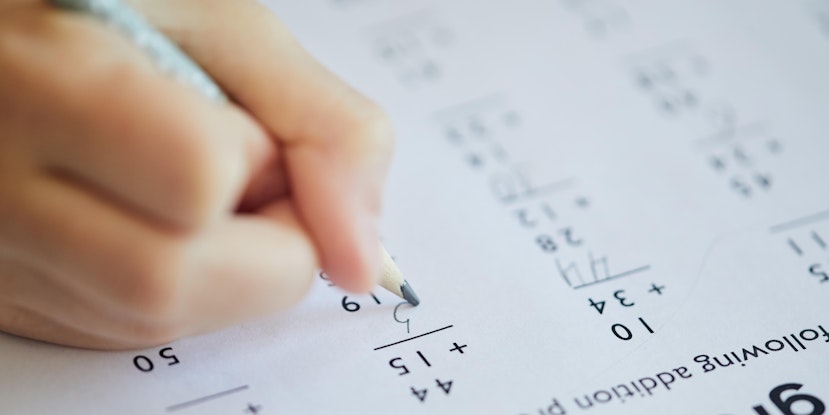
Again, there is a set of images below that show a numerical relationship. Please choose the best image to complete the series.
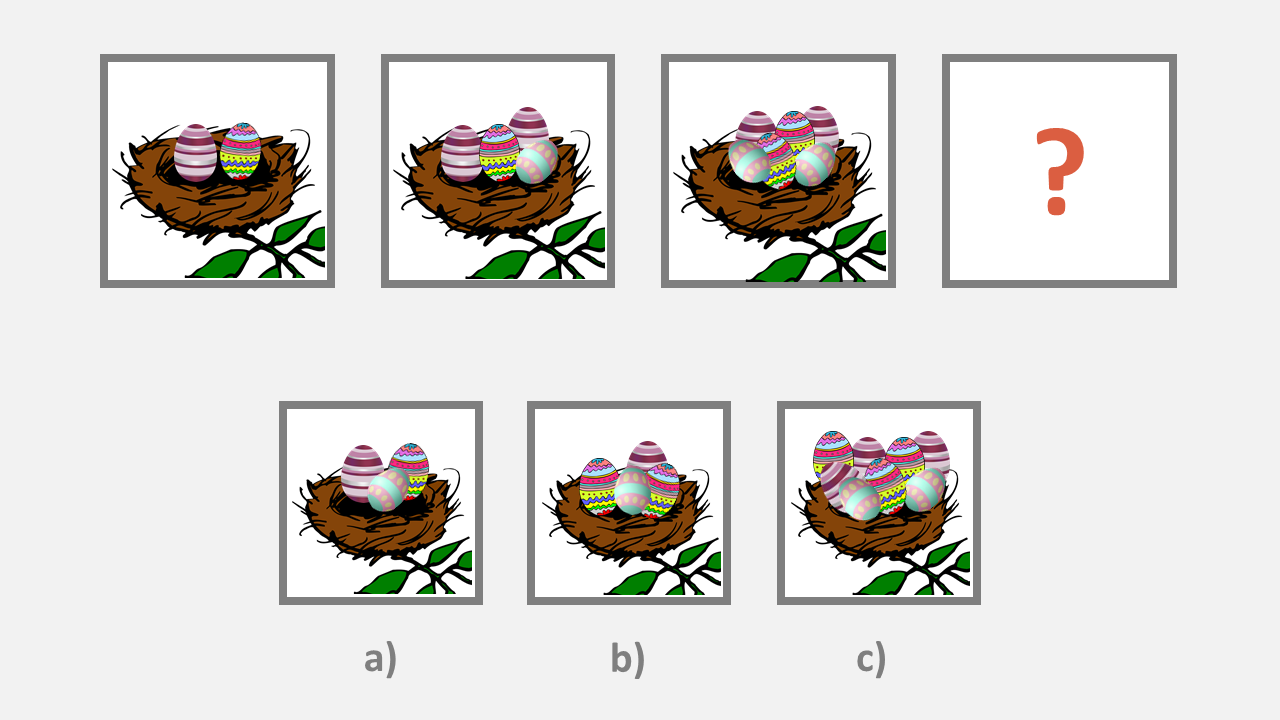
CCAT Grade 1 Number Series
Students are given a set of strings with beads and must determine the pattern of the beads to predict the next string in the series.
You will be handed three strings with beads on them. The first string has two beads, the second four beads and the third string needs to have beads added. How many beads should you add?
You will be again given two strings of beads. The first has three beads, the second has two. How many should the third string have?
CCAT Grade 1 Number Puzzles
Students are given pictures of two trains that carry a number of items. One of the trains has an unidentified compartment.
Students need to determine how many items should be in the compartment for both trains to carry equal items.
If one train carries five bananas, and the other train carries two bananas and an unidentified compartment. How many bananas are in the unidentified compartment?
In this train, the first compartment has five soccer balls. The second train has two soccer balls and an empty compartment. How many soccer balls are in the compartment?
CCAT Grade 1 Non-Verbal
These questions assess a student’s ability to reason and problem solve using diagrams and pictures. Students work on figure classification and matrices.
The CCAT 7 test includes a number of subtests that are given to children in varying age groups.
There are three areas of questions:
CCAT Grade 1 Figure Matrices
Students are given a pair of shapes that have a relationship. Students are also given another pair with a missing shape and must identify what the missing shape is based on the relationship.
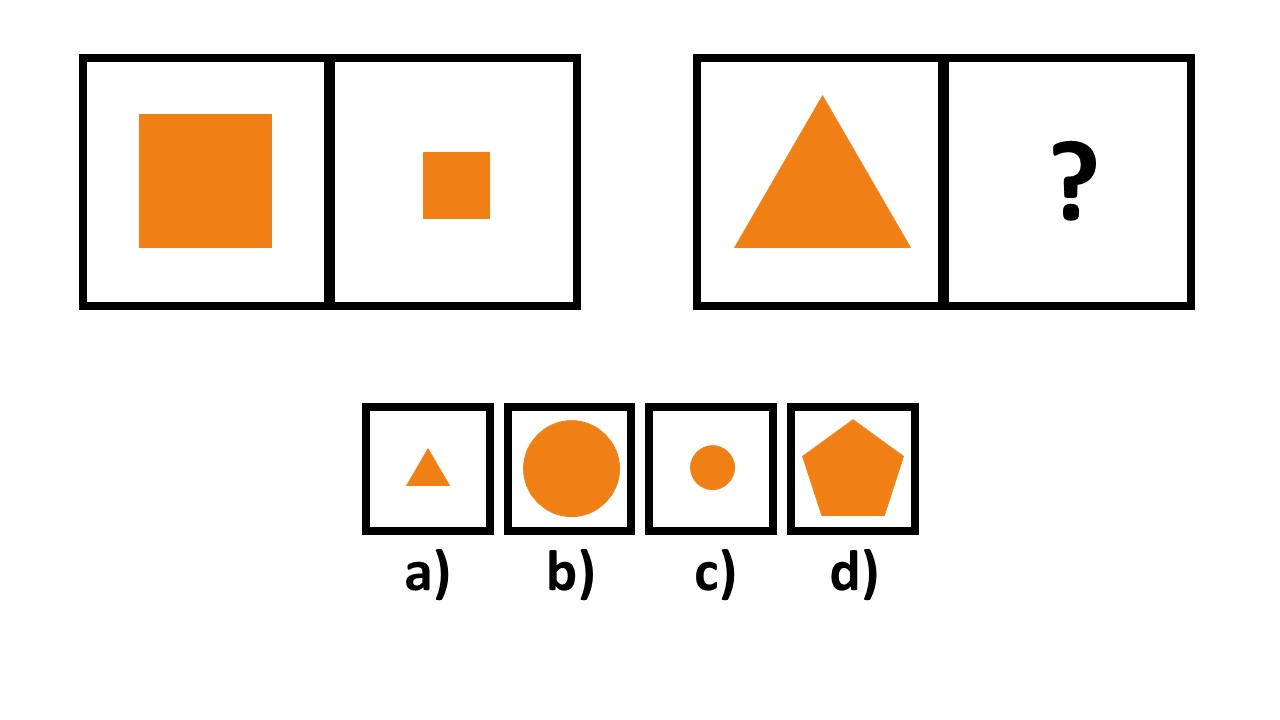
CCAT Grade 1 Figure Classification
Each question contains three shapes from the same category. Students need to identify the category and choose the category to which the three shapes belong.
Below are three images that are of the same group. Please identify the group and what makes it a group.

There are three images below. Identify the group and what makes it a group.

CCAT Grade 1 Paper Folding
Students are given a piece of paper that is folded with holes punched in it. They then need to discern what the paper will look like when it is unfolded.
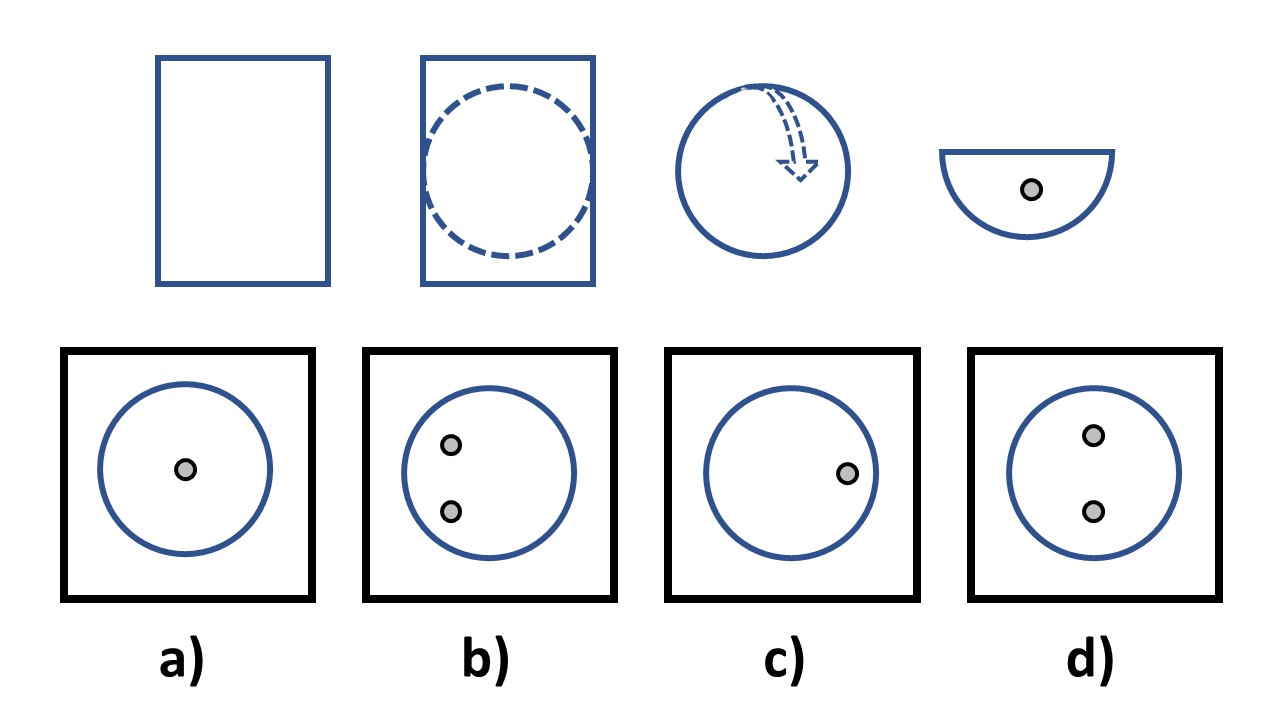
How Is the CCAT Grade 1 Scored?
With any test it is important to understand how it is scored. There are a few important things to note about how the CCAT 7 is scored.
The CCAT scores consist of a composite raw score, which combines verbal, quantitative and non-verbal abilities. It is based on the number of correct answers.
Each student also receives three different score reports:
- The Age Percentile Rank – This ranks a student compared to others in their age group.
- The Grade Percentile Rank – This ranks a student in their grade.
- The Stanine Score – This provides a specific range of scores that have predetermined ranks, with 9 being very high, 4 to 6 being average and 1 being very low.
How to Pass the CCAT Grade 1 in 2025
Students ready to take the Grade 1 test are not prepared to undertake formal study. There are other ways that they can prepare to do the best they can:
Step 1. Take Practice Tests
Writing a few practice tests and practice questions can help your child understand what they will be dealing with in the real test and will hopefully help ease any anxiety they may be feeling.
CCAT practice tests provide CCAT practice questions and should also give you a feeling of where any weaknesses may lie and areas that could use some help.
You should be able to find a number of questions that provide free practice to improving problem-solving skills.
Step 2. Know Your Test
A lot of anxiety can be eased by knowing what to expect. Go over the test with your child and explain how many questions there are, what type of questions there will be, how long they have for the test, when they will find out their results and why they are sitting the test.
Step 3. Practice Reading
The more you have your child read, and the more you read to them, will help with spelling, vocabulary and word recognition. It can also help students to have a good grasp on understanding and responding to instructions.
Step 4. Try Spelling Games
Spelling games can help students with letter and word recognition, as well as simple spelling.
Step 5. Play Number Games
Both number games and working on some simple math can help with number recognition and improve mathematical work. Simple things like counting, adding and subtracting can all help in the test.
Step 6. Offer Encouragement
Because children this age are not ready to study for this type of test, some of the best help they can get is a lot of praise and encouragement from their parent or caregiver. The best boost you can give is to let them know they are doing a wonderful job.
Step 7. Play Games With Pattern Recognition
Working on some games with pattern recognition can help your child recognize other patterns more easily and quickly when it comes to test time.
Step 8. Be Prepared
Children who get a good night’s sleep, as well as breakfast the next morning, will be likely to perform better than those who do not. Ensure that your student has all the tools they need (pencils, erasers) and that any forms have been filled out ahead of time. Knowing that everything is ready to go will help reduce any anxiety they may be feeling.
Final Thoughts
Students will sit many tests throughout their school years. Setting them up to view them positively and do well will set the tone for the rest of their school years.
It is helpful to explain how the test works to your student, as well as taking them through the different batteries and subtests.
Although it may be difficult to practice for this type of test, and younger children are not yet ready for formal studying, there are several ways to help your child prepare, both academically and personally.
Helping your child be as comfortable and prepared as they can be will only help them do well now and in future tests.




